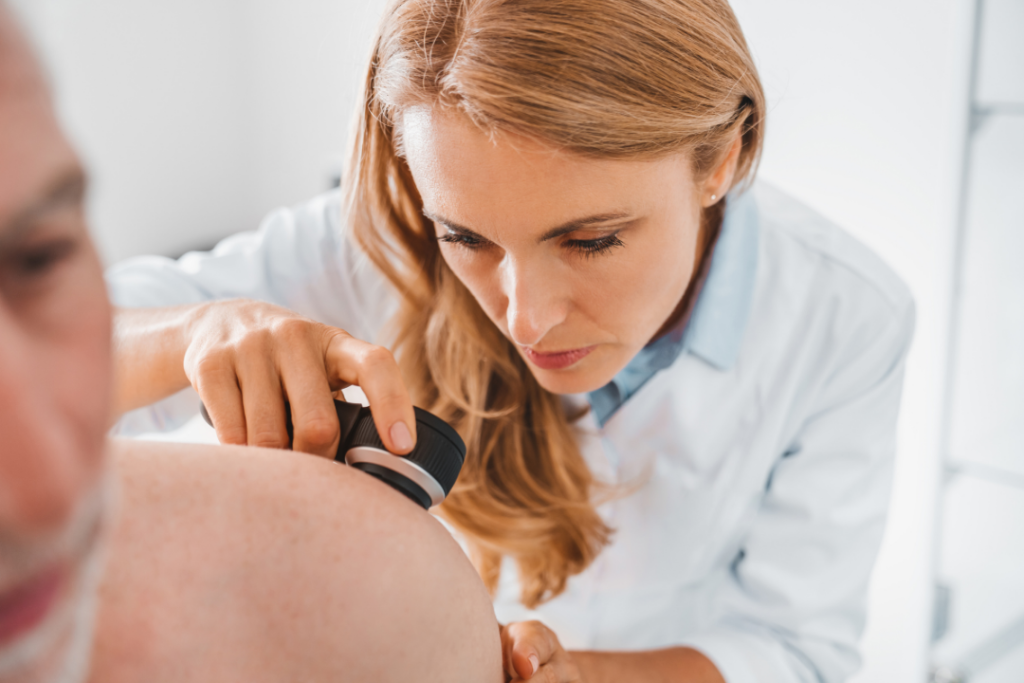
Diabetes affects more than blood sugar, it impacts circulation, nerve function, and ultimately the body’s ability to repair itself. For thousands of Oklahomans living with diabetes, wounds are more than just skin-deep. Left untreated, they can lead to serious infections and even limb loss. That’s why expert diabetic wound care is critical—and why at Advanced Wound Therapy, we bring specialized care directly to patients who need it most.
If you or someone you love is diabetic, this guide will help you understand how wounds develop, why they’re so dangerous, and what can be done to prevent amputations.
High blood sugar levels over time damage both blood vessels and nerves. This results in:
This combination creates the perfect storm. Small injuries often go unnoticed, untreated, and quickly become infected. Once a wound becomes chronic, it’s harder to manage and more likely to lead to hospitalization—or amputation.
The majority of diabetic amputations start with a foot ulcer. These ulcers often begin as blisters, cuts, or calluses that break down due to pressure or poor footwear. Because many diabetics have neuropathy (nerve damage), they don’t feel the injury until it’s too late.
Warning signs to watch for include:
When caught early and treated correctly, many of these wounds can be managed without complications. That’s where timely diabetic wound care makes a life-changing difference.
At Advanced Wound Therapy, we specialize in treating wounds caused by diabetes—especially those that aren’t responding to standard care. Our in-home wound care model allows us to treat patients directly where they live, removing barriers like travel, clinic delays, and inconsistent follow-up.
Here’s what we provide:
We evaluate the type, depth, location, and appearance of the wound. We also examine how your medical history, mobility, footwear, and living environment affect your risk. Every treatment plan begins with a clear understanding of the full picture.
Diabetic wounds are highly susceptible to infection. We manage this with proper wound cleansing, debridement if needed, and the application of antimicrobial dressings that reduce bacterial load and support a clean wound environment.
In select cases, we use amniotic tissue grafts to support the wound bed and help manage wounds that have become difficult to treat. These grafts contain naturally occurring components that play a role in wound management strategies tailored to diabetic patients.
To learn more about how amniotic tissue is used in wound care, explore this clinical research article.
We provide guidance on relieving pressure from the wound area, whether through modified footwear, positioning, or support devices. Offloading is essential for foot ulcers to avoid tissue breakdown and worsening of the wound.
We teach patients and their support systems how to care for the wound between visits, recognize early warning signs, and prevent future injuries—critical tools for long-term success.
The earlier a diabetic wound is treated, the lower the risk of serious complications. Delays in care often lead to deeper infections, bone involvement (osteomyelitis), and the need for surgical removal of toes, feet, or even legs. Unfortunately, many patients wait too long because they didn’t recognize the seriousness of their wound—or couldn’t get to a clinic.
That’s why our mobile model exists: so no patient has to wait weeks or travel hours to receive expert diabetic wound care.
Whether you live in a small town or just want care delivered to your doorstep, we’re ready to help.
Diabetic wounds don’t have to lead to surgery, hospitalization, or limb loss. With the right care—provided early, consistently, and in a way that fits the patient’s life—outcomes can drastically improve.
If you or a loved one is managing diabetes and has an open wound, don’t wait. Let Advanced Wound Therapy provide the expert diabetic wound care you need—right in your home. Reach out today with our contact form and take the first step toward protecting your health and your independence.
Author: Matt Carmichael, DO
Don't wait—get the expert wound care you need. Schedule your consultation with Advanced Wound Therapy today.